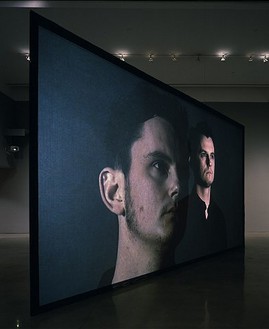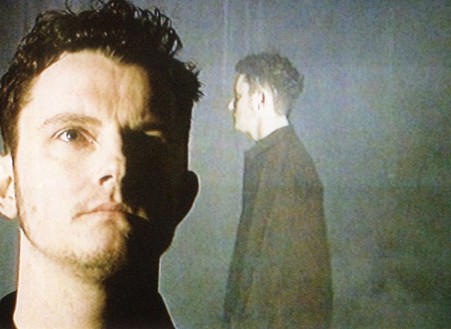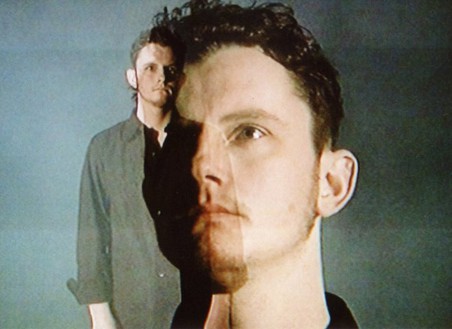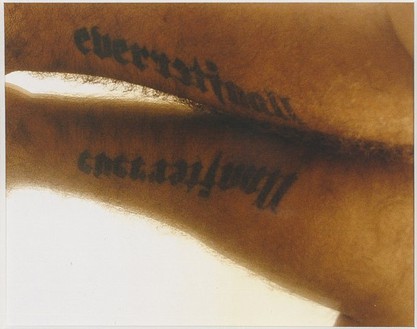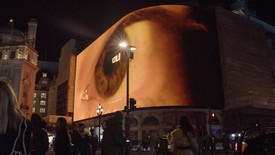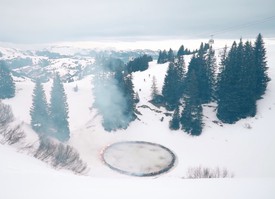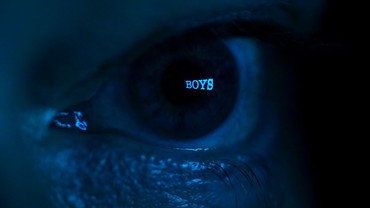About
Gagosian is pleased to present Douglas Gordon’s Fog (2002), an installation of two large-scale video projections. This is the first time the work has been shown in the United States.
In Fog, the camera circles around a solitary, motionless figure who is surrounded by mist, which then dissipates. The images are seen on both sides of a transparent screen, with the projections playing out of sync, so that one becomes an echo of the other. The figure and his doppelgänger intersect, become one, and separate, endlessly. The divided self has long preoccupied Gordon, whose work seeks to capture the outward physical manifestation of the internal struggle between good and evil. Here, this duality is expressed through the shifting views of the double protagonist, who may be seen as a surrogate for the artist.
Gordon’s work draws on a multiplicity of influences ranging from classical literature to Hollywood films. Fog, which consists of original footage shot by the artist, gives dramatic visual form to the conflict embodied in James Hogg’s nineteenth-century Scottish novel The Private Memoirs and Confessions of a Justified Sinner. Inspired by the struggle and eventual demise of the novel’s main character Robert Wringhim, a righteous man who confronts his devilish other, Fog can be read as a visual score detailing the complexity of one’s ever-changing psychological makeup.
Share
Artist
Download

Douglas Gordon: To Sing
On the occasion of Douglas Gordon: All I need is a little bit of everything, an exhibition in London, curator Adam Szymczyk recounts his experiences with Gordon’s work across nearly three decades, noting the continuities and evolutions.
Douglas Gordon: if when why what
Douglas Gordon took over the Piccadilly Lights advertising screen in London’s Piccadilly Circus, as well as a global network of screens in cities including Berlin, Melbourne, Milan, New York, and Seoul, nightly for three minutes at 20:22 (8:22pm) throughout December 2022, with his new film, if when why what (2018–22). The project was presented by the Cultural Institute of Radical Contemporary Art (CIRCA) in conjunction with the exhibition Douglas Gordon: Neon Ark at Gagosian, Davies Street, London.
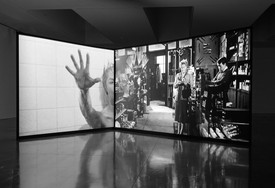
Douglas Gordon
Katrina Brown discusses the importance of Douglas Gordon’s 24 Hour Psycho (1993) and some of the films that followed, touching on threads that run throughout the artist’s career.
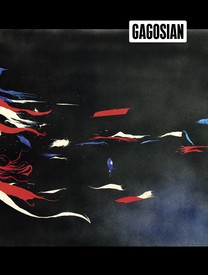
Gagosian Quarterly Spring 2018
The Spring 2018 Gagosian Quarterly with a cover by Ed Ruscha is now available for order.
Douglas Gordon: I had nowhere to go
Featuring an extensive interview with Douglas Gordon on the process of making his 2016 film I had nowhere to go: Portrait of a displaced person, this video, produced by Berlin Art Link, includes clips of Jonas Mekas and revealing anecdotes about the creation of the film.
Douglas Gordon and Morgane Tschiember
Douglas Gordon and Morgane Tschiember’s installation As close as you can for as long as it lasts, presented during Elevation 1049: Avalanche in Gstaad, Switzerland.
